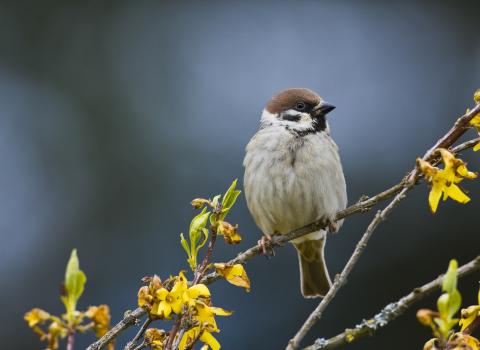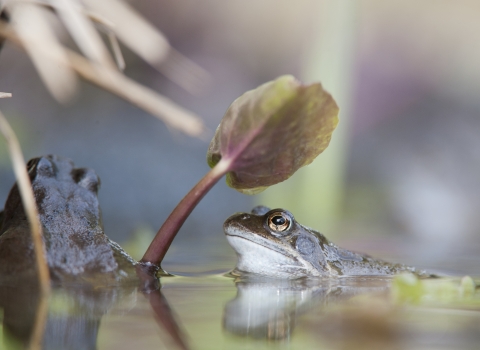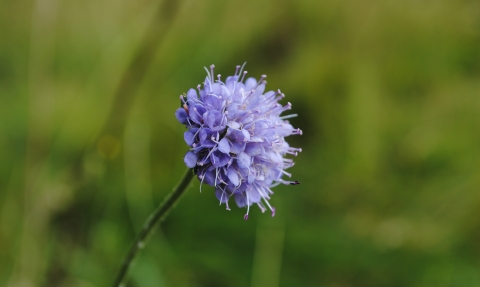
Amy Lewis
Plants for pollinators
Food for thought
With wild habitats at risk, bees and other pollinators need us to provide a food source in our outdoor spaces.
You can help by growing flowers, shrubs and trees in your outside space that provide nectar and pollen for bees and other pollinators throughout the year.

Heather Keetley
Know your soil
When planning a wildlife garden, it is important to know your soil type.
Not all the plants listed below will be suitable for all soil types, and may not grow properly or die completely.
pH test
A simple test to find out if your soil is acid, alkaline or neutral can be carried out using a soil testing kit from your local garden centre, which uses colour as an indicator.
The solution will turn yellow-orange for acid soil, green for neutral and dark green for alkaline soil. Most plants prefer a pH of 6.5 to 7 – the point where nutrients are most easily available.
Water retention
Clay and peat soils hold water better than sandy and chalk soils. This test will show if your soil will become waterlogged in wet weather, or dry out quickly in summer.
To Test The Water Retention Of Your Soil:
Fold a piece of kitchen paper into a funnel and place in a jar then fill a small measuring jug with a recorded amount of water. Place a tablespoon of dry soil in the funnel and add water to the centre of the soil. Stop adding water when the first drop falls into jar, noting how much water you have added. Wait until soil has drained. Measure the volume of drained water: if over half of the added water is recovered, your soil is well drained.
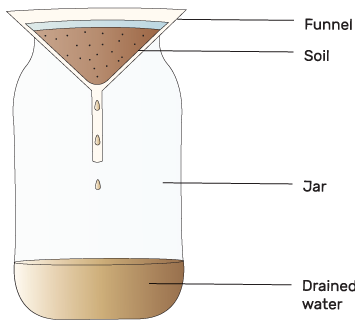
Wildlife attracting plants
From hazel to hebe, there is a a huge range of different types of flowering plants, shrubs and trees that both look stunning and attract a plethora of pollinators.
Herbs
A herb garden is a fantastic way to attract a range of pollinators to your patch, whilst providing a practical resource for the kitchen. What's more, herbs are easily grown in tubs and containers in smaller spaces.
Perfect plants include chamomile, rosemary, thyme, marjoram, lavender, hyssop, catmint, curry plant, fennel, mint, sage and chives.
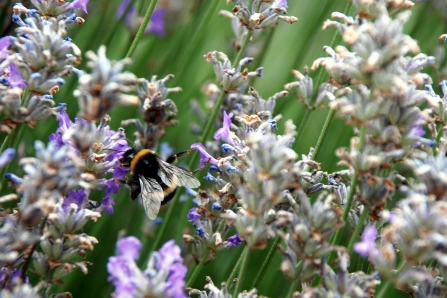
Zsuzsanna Bird
Fruits
Fruit bearing trees, bushes and plants are perfect for pollinators. They are also great for making your own home made preserves.
Ideal varieties include blackcurrants, redcurrants, raspberries, strawberries, blueberries, apple, pear, peach and plum,
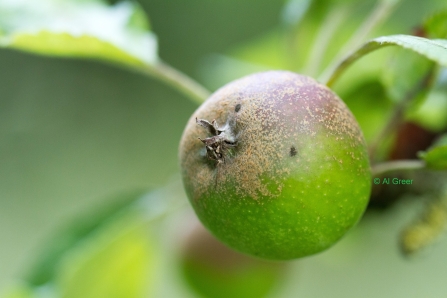
© Al Greer
Native trees and shrubs
The fruits, seeds and blossom found on our native trees and shrubs help feed pollinators and other wildlife.
Good choices include field maple, hazel, blackthorn, cherry, crab apple and willow.
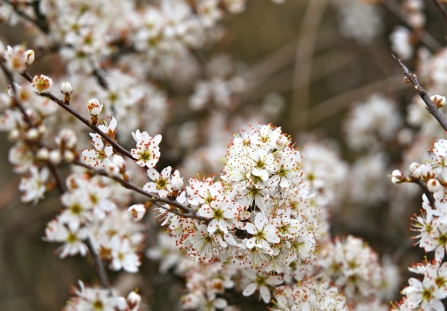
Rob Brooks
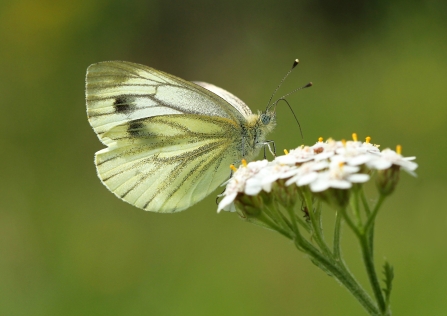
Jon Hawkins
Plants by season
Choose a mixture of seasonal flowering plants, shrubs and trees to ensure a year round food source in your garden.
Spring (March - May)
- Barberry (shrub)
- Marsh marigold
- Cotoneaster (shrub)
- Crocus (spring-flowering)
- Erysimum ‘bowles mauve’ wallflower
- Cranesbill
- Hebes
- Honesty
- Oregon grape
- Native cowslip
- Native primrose
- Skimmia japonica (shrub)
- Forget-me-not
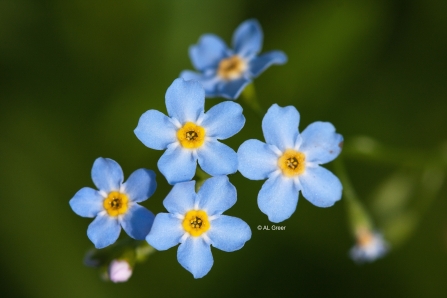
Forget Me Not Wilwell Farm Cutting © Al Greer
Summer (June - August)
- Yarrow
- Hollyhock
- Alliums
- Alkanet
- Angelica
- Poppy
- Thrift
- Borage
- Buddleja davidii (shrub)
- Common marigold
- Vipers bugloss
- Heather
- Honeysuckle
- Greater & lesser knapweed
- Cornflower
- Red valerian
- Cosmos
- Ice plant
- Sweet william
- Foxglove
- Common teasel
- Coneflower
- Blue eryngo
- Hemp agrimony
- Fuchsia
- Corn marigold
- Sunflower
- Hydrangea
- Jasmine
- Feld scabious
- Ox-eye daisy
- Ragged robin
- Evening primrose
- Jacob’s ladder
- Firethorn (shrub)
- Coneflower
- Salvia species
- Lamb’s ear
- Verbena bonariensis
Kevin Gilbert
Autumn (September - November)
- Japanese anemone
- Michaelmas daisy
- Clematis
- Crocus
- Common ivy
- Salvia species
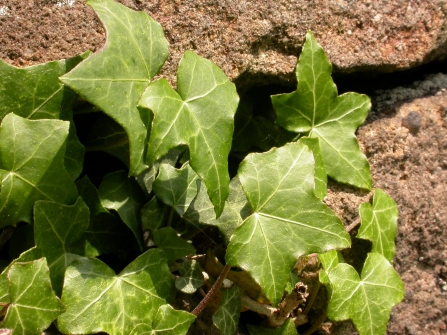
Philip Precey
Winter (December - February)
- Crocus (winter flowering)
- Snowdrop
- Hellebores
- Honeysuckle
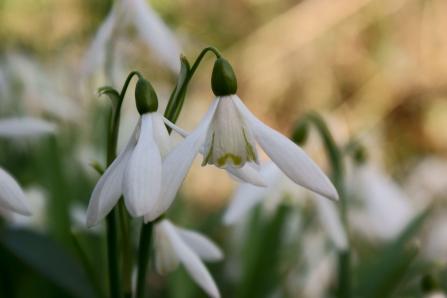
Rob Pettifer
Top tips
- Grow a range of plants with different flowering times to ensure a year round food source for pollinators.
- Avoid plants with double or multi-petalled flowers. This makes them harder for insects to access.
- After annuals and perennials have died off, leave the seed heads throughout the winter to provide food and shelter for wildlife.
- Never use pesticides on plants in flower - these will harm visiting pollinators.

